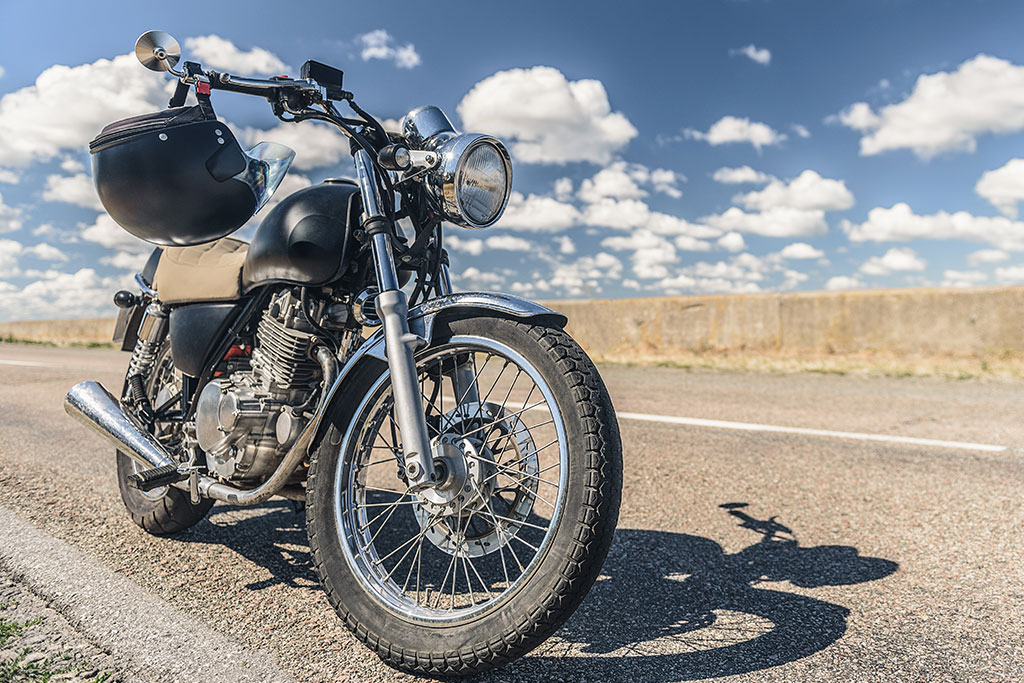Four wheels may be inherently safer than two, but the freedom of straddling a motorcycle is a feeling millions of Americans find impossible to resist. Completing a motorcycle safety course is one of the best things you can do to improve your chances on the road. However, equipping yourself with some of the best safety gear is a close second. Here are some recent innovations worth considering.
1) Air Bag Clothing
Car air bags have saved as many as 50,000 lives during the past few decades.1 While leather outerwear and Kevlar® reinforced clothing have helped prevent road rash historically, air bag clothing is a safe alternative that’s becoming more affordable for riders. These innovative vests, jackets and bodysuits used to be exclusive to motorcycle racing but are now widely available for street riding as well.
Motorcycle air bag clothing uses computerized systems that can detect when accidents might occur and inflate in milliseconds to minimize the force of impact.
2) Adaptive Headlights
The latest headlight tech has come a long way from sealed beam lights, dating back to the 1940s. Most modern motorcycles are equipped with bright LED beams that do an impressive job of lighting up the road. Many new motorcycle headlights also pivot as you turn, greatly improving visibility. These adaptive headlights put light where your bike will be traveling, instead of only immediately ahead. Don’t want to trade in your older bike? Fortunately, many aftermarket devices allow owners of older bikes to upgrade to this superior technology.
3) Electronic Tire Pressure Monitors
Tire pressure monitoring systems that are commonplace in cars are becoming more and more prevalent on bikes. Ideally, you should check your tire pressure often and before embarking on a long ride, yet many riders only perform a simple visual check. Riding with your tire pressure even a few PSI under the recommended level can make a significant impact on the way your bike handles and brakes. Although many new motorcycles already come with tire pressure monitoring systems installed, many standalone systems can be added for well under $100.
4) Satellite Messengers and Positioning Tech
As technology advances and prices drop, satellite messengers and positioning tech are coming within reach for many motorcyclists. Why not simply use your smartphone for positioning tasks? Many motorcycle adventures take riders “off the grid” where mobile phone towers are few and far between.
Satellite messengers give you emergency or non-emergency messaging capabilities from the top of remote mountains and miles into the desert. Keeping one in your pocket can allow you to call for help even if you’re off the road and separated from your bike. Standalone GPS units made for motorcycles offer a similar safety advantage because they contain preloaded maps not tied to mobile data. They’re also much easier to use while wearing motorcycle gloves.
5) An Upgraded Helmet
Before riding any motorcycle, you should always wear a DOT-approved helmet whether local laws require you to or not. Between 2017 and 2018, a 6% increase in helmet usage corresponded with a 5% decrease in motorcycle deaths.2 But not any helmet is necessarily sufficient—and helmet tech is always evolving. We recommend checking out the latest NHTSA safety recommendations before you buy.3
If you have an older helmet (five years max according to the Snell Foundation4), it’s a great time to upgrade with improved construction and smarter technologies. Recent developments include everything from better ventilation systems to heads-up display rear-view cameras and color-changing LEDs that link to braking systems.
6) Better Insurance Coverage
Owning all the latest safety gear is no replacement for good judgment or a motorcycle insurance policy that fits your needs. One of the easiest ways to save on coverage from top-rated insurance companies is using our site to quickly compare rates and customize coverages from multiple companies. Over the years, Answer Financial has helped nearly 5 million people like you find the right coverage for their homes and vehicles, including motorcycles and ATVs.
